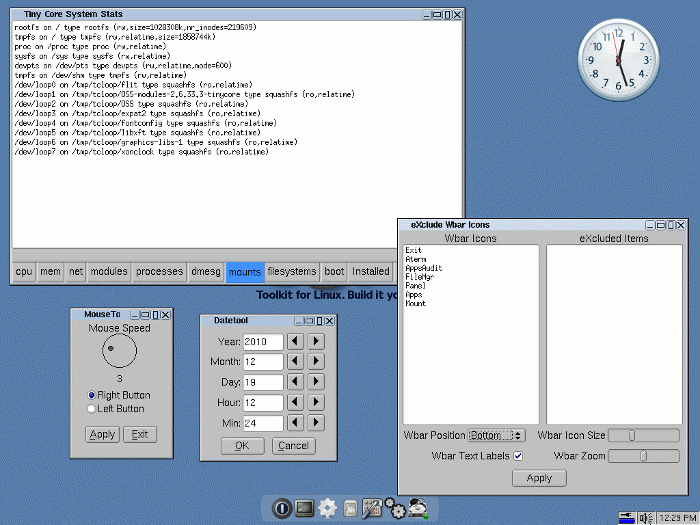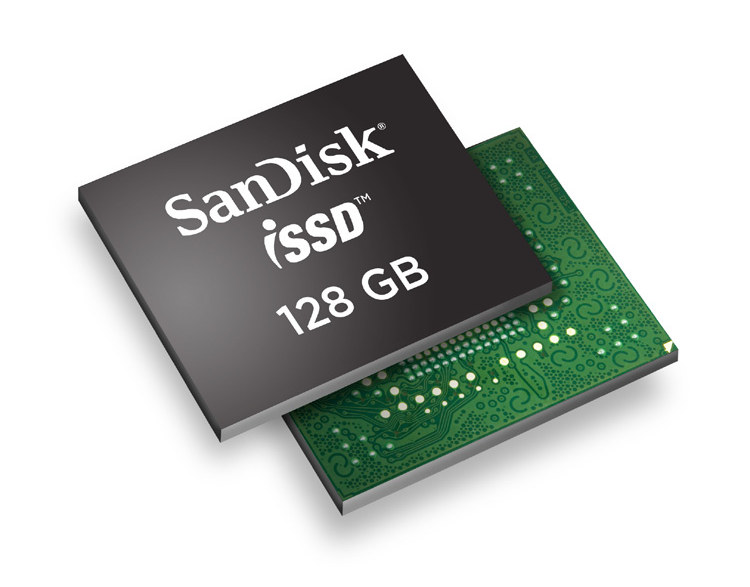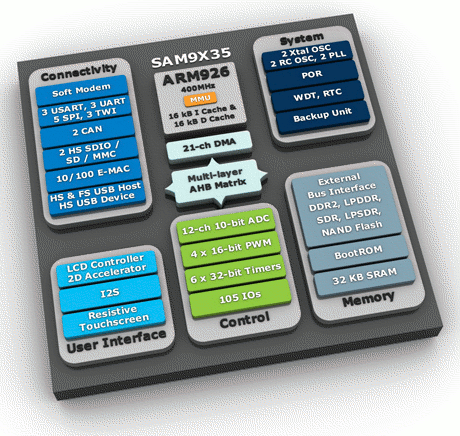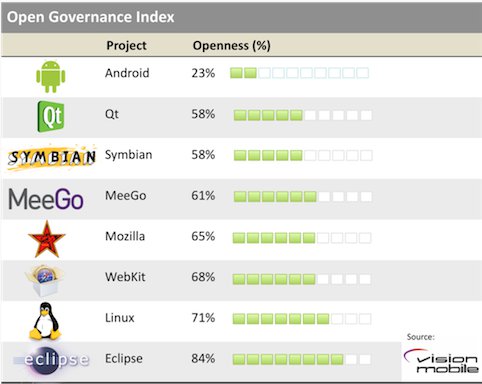The Final International Draft standard (FCD) was unanimously approved on August 12th, 2011. The standard should be published this year. The draft name of the standard is C++0x, but since it will be published this year, it should probably renamed C++11, and if there are delays in its publication it could well be renamed to C++12. You can download the 1334 pages “Working Draft, Standard for Programming Language C++” to get the full details. If you don’t feel like going thru that massive document, but still want to learn about C++0x, I recommend you check the C++0x FAQ on Bjarne Stroustrup (The creator of C++) homepage. Here are some the new features and improvements: initializer-lists – Initializer lists are not just for arrays any more uniform initialization syntax and semantics template aliases (previously know as template typedef) rvalue references defaulted and deleted functions variadic templates auto – deduction of a type from […]
Tiny Core Linux Distribution: 10 MB Linux UI Desktop
If you are looking for a small footprint Linux distribution, you may be interested in Tiny Core Liunx. Here’s the description on Tiny Core Linux Website: Tiny Core Linux is a very small (10 MB) minimal Linux GUI Desktop. It is based on Linux 2.6 kernel, Busybox, Tiny X, and Fltk. The core runs entirely in ram and boots very quickly. Also offered are Micro Core, a 6 MB image that is the console based engine of Tiny Core, and Multi Core, which includes Tiny Core, Micro Core, networking tools and an installer. Micro Core contains CLI versions of Tiny Core’s programs allowing the same functionality of Tiny Core’s extensions, only starting with a console based system. It is not a complete desktop nor is all hardware completely supported. It represents only the core needed to boot into a very minimal X desktop typically with wired internet access. Tiny Core […]
SATA-IO µSSD Standard for Embedded Solid State Drives
The Serial ATA International Organization (SATA-IO) recently announced a new standard for embedded solid state drives (SSDs) called “SATA µSSD”. This standard offers high-performance, low-cost, embedded storage solutions for mobile computing platforms like ultra-thin laptops. The µSSD specification eliminates the module connector from the traditional SATA Interface, allowing drives to be manufactured in single ball grid array (BGA) packages that sit directly on a motherboard. The new µSSD standard should be part of the SATA Specification. However, it does not seem to be in the latest SATA Specification (Revision 3.1) released in July 2011. This specification is available free of charge to members. For non-members, it can be purchased here for 25 USD. Sandisk is currently the only company providing products that follow the µSSD standard with its iSSD™ integrated storage device offering capacities of 8, 16,32, 64 & 128 GB and transfer throughput of up to 450MB/s via a […]
HTC Releases OpenSense SDK
HTC recently released OpenSense SDK, a framework encompassing all available HTC SDKs as well as features that will be offered in the future for HTC Sense user interface. Supported features include: Common Controls API: UI widgets and components that will provide developers with the ability to provide the Sense UI look and feel to their applications. Stereoscopic 3D (S3D) API: API documentation and sample code that illustrates how to programmatically enable the 3D display mode of the parallel barrier based screen for various types of applications. This API is provided as part of the phone add-on extension to the Android SDK. Tablet Pen API: API documentation and sample code for providing a framework for fully fledged drawing and painting applications as well as full access to the pen events at a low level. This API is provided as part of the tablet add-on extension to the Android SDK. API documentation […]
Pandaboard Benchmark: Android (Pandroid) vs Linaro Android
Here’s a video with two Pandaboards (powered by TI OMAP 4) running Android. On the right, there’s Google’s Android, built with the gcc 4.4 toolchain provided by Google and the Pandroid kernel. On the left, there is a Linaro build, using Linaro’s gcc 4.5 toolchain and Linaro’s 3.0 kernel for the Panda board. There is a noticeable difference in the time taken by both boards to execute the demo. (Android Linaro being faster). The demo (Benchmark by 0xlab) uses software decode on both boards. They also showcase the Freescale i.MX53 and ST Ericsson Snowball development boards.
5 New Atmel SAM9 Processors: SAM9G15, SAM9G25, SAM9G35, SAM9X25, and SAM9X35
Atmel recently announced five new embedded processors for its SAM9 family all running at 400MHz, featuring 100mW consumption, support for DDR2 and NAND flash memory, with some models offering LCD touchscreen support and CAN interfaces: SAM9G15 based on ARM926EJ Embedded Microprocessor Unit with LCD, Touchscreen, HS USB and LPDDR/DDR2/MLC NAND support. SAM9G25 based on ARM926EJ Embedded Microprocessor Unit with Ethernet, HS USB and LPDDR/DDR2/MLC NAND support. SAM9G35 based on ARM926EJ Embedded Microprocessor Unit with LCD, Touchscreen, Ethernet, HS USB and LPDDR/DDR2/MLC NAND support. SAM9X25 based on ARM926EJ Embedded Microprocessor Unit with Dual Ethernet, Dual CAN, HS USB and LPDDR/DDR2/MLC NAND support. SAM9X35 based on ARM926EJ Embedded Microprocessor Unit with LCD, Touchscreen, Ethernet, Dual CAN, HS USB and LPDDR/DDR2/MLC NAND support. The 3 new SAM9G processors are basically a lower cost version of the SAM9G45 with less cache, no video decoding support, etc… The 2 SAM9X processors are similar but feature […]
Android Scores Last in Open Governance Index
Vision Mobile recently released a report about different open source projects analyzing their openness via their Open Governance Index. The full report (45-pages) examines: Open source cultural roots and working upstream vs downstream Open source licenses vs governance models Analysis and classification of governance models In-depth reviews of Android, Qt, Symbian, MeeGo, Mozilla, WebKit, Linux and Eclipse Best practices in creating an open source project The governance index is not only based on the percentage of source code that is open, but on the whole software development including the transparency of the decision making-process, the involvement of the community in all aspects of the project, compliance requirements and more. There are a total of 13 metrics accross 4 area of governance: Access: availability of the latest source code, developer support mechanisms, public roadmap, and transparency of decision-making Development: the ability of developers to influence the content and direction of the […]
OMAP3 / OMAP4 Based Android Reference Designs for Smartphones and Tablets
Elektrobit (EB) announced their Specialized Device Platform (SDP), a reference design based on the Android operating system, targeted to Public Safety, Security and Defense, sectors with stringent compliance and regulatory requirements. The platform consists of form factor hardware that can be tailored to customer requirements. The current SDP has a TI OMAP 3 application processor, a high resolution touch-screen enabled display, Wi-Fi, Bluetooth, GPS, 2G and 3G modems – LTE for Band 14 being an option and runs Android 2.2 (Froyo). A version with TI OMAP 4 processor running Android 2.3 (Gingerbread) will be available in H1 2012. Linux Angstrom will also be provided for the platforms. Here are the details specifications of both reference platforms: OMAP3xxx ARM Cortex-A8 core up to 1 GHz ARM TrustZone compatible security engine NEON™ SIMD coprocessor POWERVR™ SGX graphics accelerator TMS320C64x+™ DSP up to 600 MHz OMAP4xxx Dual ARM Cortex-A9 cores up to 1.5 […]












